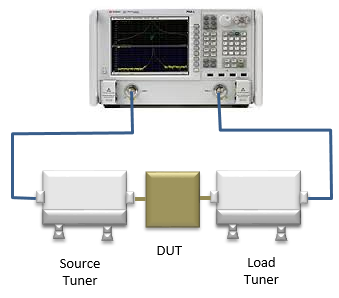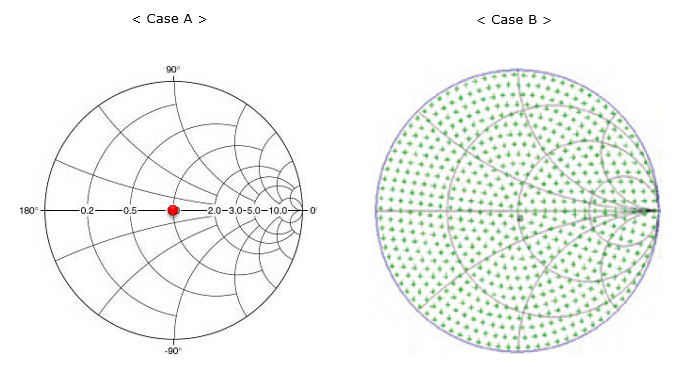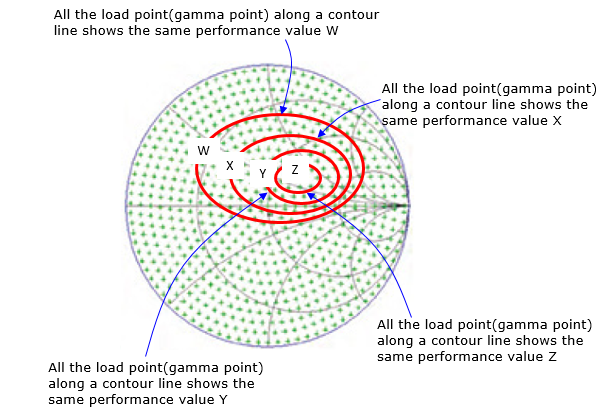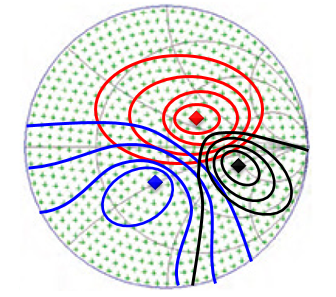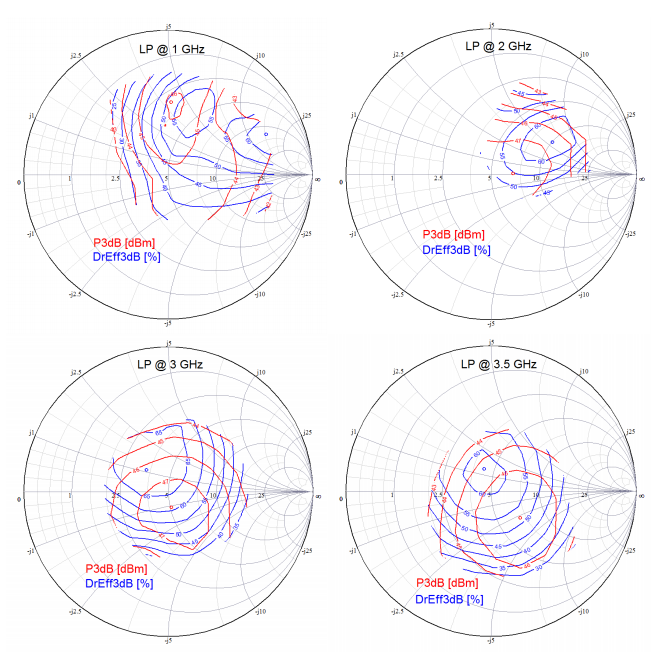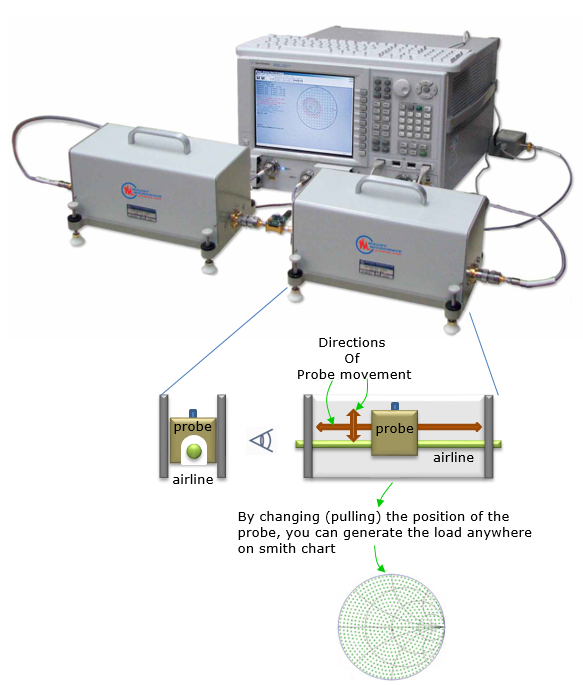|
RF |
||
|
Load Pull Test / Measurement
When I first hear of this, the first question popped in my mind was not about technical issues.. it was about english question. I thought to myself 'I think I know what 'Load' mean.. but what does it mean by 'Pull' in this case ?'. I haven't found the exact origin of this terminology yet, it seems from googling several documents that 'pull' in this case mean 'vary (or change)'. Therefore, 'Load Pull Test' mean 'Test something as you vary(change) the load to the DUT'. If there is 'Load Pull', is there such a thing called 'Source Pull' ? Yes, there is and most of the test equipment for Load Pull test (Load Pull Station) can do Source Pull as well, but the term 'Source Pull' is not used frequently.
How we test ?
The detailed test setup and the required equipment would vary depending on what yo want to test (measure), but a generic test setup can be illustrated as follows.
As you see here, the most important thing to notice is that Tuners around the DUT. These tuners are electrical or mechanical devices that can emulate an electric circuit that can introduce any magnitude and phase. The Load for the electrical device in this setup is just a kind of electrical circuit. In terms of mathematics, the property of those electrical circuit(Load) can be expressed as single complex number with a phase component and magnitue component (In electrical terms, a Load circuit(however complicated it is) can be summarized as signle Impedance block). You can think of these tuners as a black box that can emulate any a phase component and magnitue component. Varying (changing) the setting in these tunner is called 'Load Pull' or 'Source Pull'.
Why do this ?
In most of textbook situation (especially for most of passive device testing situation), what we usually do is to creating a matching circuit around the DUT that pull the load impedance to be around 50 Ohm point as in < Case A > and then measure the characteristics that you want to know at that specific point. However, for some devices (like various active devices) there are many cases where we do not use the exact 50 Ohm load for various reasons. 50 Ohm load is selected mainly because it is the best for power(energy) transfer accross the device and we need a common condition that can be agreed in the industry for easy integration of multiple discret components from various different vendors. However, this value can be good / reasonal / efficient for a certain device (e.g, passive devices) or a certain measurement parameters (e.g, S parameters), but it might not be the best condition for other types of devices(e.g, some active devices) or measurement parameters (e.g, Power efficiencies , ACPR etc). Because of this kind of requirement, you need to know (measure) the characteristics of the device (DUT) at various other points at the SmithChart. Ideally at almost every points over the whole SmithChart as marked in green in < Case B >.
How to present the data ?
The typical way to present the load pull test data is as shown below. First, measure the test item (e.g, power, efficiency, ACPR, EVM etc) at every points (or within a certain range of the points on Smith Chart to save time) and plot it as a contour lines. Each contour line indicates that the all the load points along the contour line produces the same measurement result.
In many cases, you need to test the several different items (e.g, output power, efficiency, ACPR etc) for a single device. In this case, you can represent the result on multiple Smith Chart (each chart showing only one measurement item) or more commonly you can plot the multiple measurement contours on a single Smith Chart as follows. In this example, I indicated the optimal points of each of the measurement item (red, blue, black) as a smal diamond. As you see, none of them are sitting on top of exact 50 Ohm points. Also the optimal points for the items are all different. Then the question is which load condition do we need to use in the final circuit in your product to best meet the multiple characteristics ? The answer would be 'it is up to you !'. But probably the common / most practical idia is to pick the center of the red, blue, black diamond.
I would give you a more practical example of a Load pull test from a data sheet in Reference section [1]. This is just to give you an idea on some real-life example and I will leave it up to you to interpret the detailed meaning of each of the plot :)
I learned some tricks/tips from Taeho Kim on how to apply this Chart in every day life in Celluar RF engineering. Unfortunately I am not allowed to share the specific data for the specific application for several understandable reasons. However, the basic idea that I described in this section is based on what I learned from him.
How Load/Source Tuner works ?
Many of you may not be interested in this and you don't really need to know about this.. but this was another question that came across in my mind. It was 'how can we make a general purpose circuit to create any arbitrary impedence ?' There would be several different ways to implement it, but the most typical way seems to be a kind of mechanical method as shown below. As you see, the tuner is a big box in which you can move a probe in horizontal and vertical direction. Depending on the position of the probe within the box, the total impedence of the box(tuner) varies. Now this position change can be done by Automation.
Reference :
[1] TriQuint T1G4004532-FL : 45W, 32V DC – 3.5 GHz, GaN RF Power Transistor - Datasheet [2] Qorvo TGF2978-SM : 20W, 32V, DC – 12 GHz, GaN RF Transistor - Datasheet
|
||
